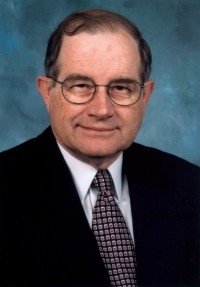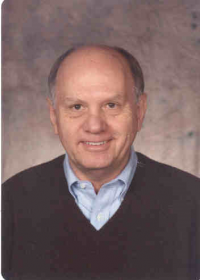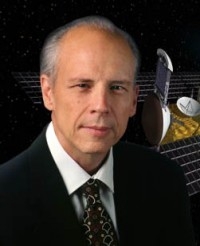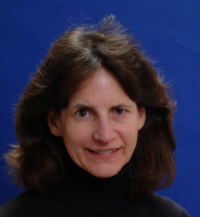
Chun C. Lin received his B.S. degree from the University of California at Berkeley in 1951 and Ph.D. from Harvard University in 1955. His thesis advisor was J. H. Van Vleck. Lin was on the faculty at the University of Oklahoma from 1955 to 1968. In 1968 he moved to the University of Wisconsin, Madison, where he is the John and Abigail Van Vleck Professor Emeritus of Physics.
Lin began his career in the field of microwave spectroscopy. While at the University of Oklahoma he initiated a program on electron excitation of atoms in collaboration with Robert M. St. John. Much of his research in this field is directed toward understanding the basic nature of the atomic and molecular processes in ionized gases. For many years, Lin also worked on the theory of the electronic structure of crystals and impurity atoms in solids. Lin served as the Chairman of the Gaseous Electronics Conference in 1990 - 1992 and the Chair of the Division of Atomic, Molecular, and Optical Physics (DAMOP) of the American Physical Society in 1994 - 1995.

Dr. Neal Lane, besides his faculty appointment at Rice University, also holds appointments as a Senior Fellow of the James A. Baker III Institute for Public Policy, where he is engaged in matters of science and Technology policy, and in the Department of Physics and Astronomy. Born in Oklahoma City in 1938, Dr. Lane earned his B.S., M.S. and Ph.D. degrees in physics from OU under the direction of Prof. Chun Lin. Prior to assuming his current position at Rice University, Dr. Lane served as Assistant to the President for Science and Technology and Director of the White House Office of Science and Technology Policy and as Director of the National Science Foundation (NSF) and member (ex officio) of the National Science Board. Before becoming the NSF Director, Dr. Lane was Provost and Professor of Physics at Rice University in Houston, Texas. He first came to Rice in 1966, when he joined the Department of Physics as an assistant professor. In 1972, he became Professor of Physics and Space Physics and Astronomy. Dr. Lane left Rice from mid-1984 to 1986 to serve as Chancellor of the University of Colorado at Colorado Springs. In addition, from 1979 to 1980, while on leave from Rice, he worked at the NSF as Director of the Division of Physics. Widely regarded as a distinguished scientist and educator, Dr. Lane’s many writings and presentations include topics in theoretical atomic and molecular physics and science and technology policy. He also holds the Distinguished Alumnus Award from the OU College of Arts and Sciences.

Scientific pioneer Alva T. Stair, Jr. was born in Oklahoma City, raised near Canton, OK and graduated from the University of Oklahoma with a degree in mathematics in 1952 and a Ph.D. in physics in 1956 under J. R. Nielsen. He has published many scientific papers throughout his career and was visiting lecturer in applied physics at the Lowell Technological Institute in Massachusetts from 1960 to 1962, before becoming a Ph.D. advisor at Utah State University (1965-1970). Dr. Stair was also appointed as an Air Force project scientist (1970-1977), branch chief (1975-1982) and was named chief scientist in the senior executive service of the Air Force Geophysics Laboratory in 1982. He retired from the Air Force in 1986. In 1988 Dr. Stair was inducted into the Oklahoma Hall of Fame. His is currently president of Visidyne Inc.
A. T. Stair, Jr. helped develop two major technologies: Fourier transform spectroscopy and totally cryogenic infrared sensors for laboratory, rocket and space use. Within his own laboratory he created the equivalent of entire physics and chemistry departments to study infrared radiation processes of aurora, airglow and nuclear induced backgrounds.

Dr. Slocum founded Polatomic, Inc. in 1982 and serves as Chairman and Chief Technical Officer. Bob is also Founder of Integrated Photonics, the world’s largest manufacturer of synthetic garnet used in optical isolators for the Optical Internet, and Founder and CEO of Slocum Geophysics, a geophysical exploration company that applies Navy sub-hunting technology to oil exploration. Bob was born in Oklahoma City, grew up in El Reno and received his BS in 1960 and MEP in 1963, both in Engineering Physics, from the University of Oklahoma. He received his Ph.D. in Atomic Physics from the University of Texas at Austin in 1969. From 1959 to 1982 Bob worked at Texas Instruments where he directed production research for the AN/ASQ-81 helium magnetometer and led the advanced magnetometer research group as a Senior Member of the Technical Staff. He is the inventor of the diode laser pump source for helium magnetometers, the nuclear free precession helium-3 magnetometer and the Planar Thin-Film Polarizer and has published numerous papers on ultra-high performance optical magnetometers for space, Navy and geophysical applications as well as Strategic Planning for Small Businesses.

Dr. Benton C. Clark is Chief Scientist, Flight Systems, at Lockheed Martin Astronautics. He received his Ph.D. in Biophysics from Columbia University in 1968. He was responsible for conceiving and developing the x-ray fluorescence spectrometers used for geochemical analyses of Martian soil samples onboard the Viking landers. He was Co-I for development of the lightflash detector and sunshade for the Particle Impact Analyzer (PIA) experiment, flown successfully on the Giotto mission. He has introduced the concept of key roles for cometary particulates and formation of comet ponds as an enabling step for the abiotic origin of life. He chairs the External Advisory Committee for the NASA Center for Research and Training in Exobiology at the University of California San Diego and Salk Institute. He has received the NASA Public Service Medal, the Wright Brothers Award, the Air Force Service Medal, and has been selected Inventor of the Year for Martin Marietta Corporation and Author of the Year for Martin Marietta Astronautics.

Professor Deborah Watson is the Edith Kinney Gaylord Professor of Physics Emeritus at OU having joined the faculty in 1981. She received her Ph.D. at Harvard University in 1977 under the direction of Professor Alex Dalgarno, was a postdoctoral fellow at Caltech (1977-1980), and a staff scientist at the Aerospace Corporation (1980-1981). An atomic/molecular theorist, Professor Watson began her research career in the field of electron-molecule scattering. In the last two decades her AMO theory group at OU has used group theoretic techniques to study ultracold systems of bosons and more recently fermions, receiving funding from NSF, AFOSR, ARO and ONR. She has served as Chair of TAMOC, the theoretical body of the Division of Atomic, Molecular and Optical Physics (DAMOP) and has served on numerous advisory committees for DAMOP, ITAMP (the AMO theory institute at Harvard), NSF and the National Academy of Sciences. She is a Fellow of the American Physical Society.